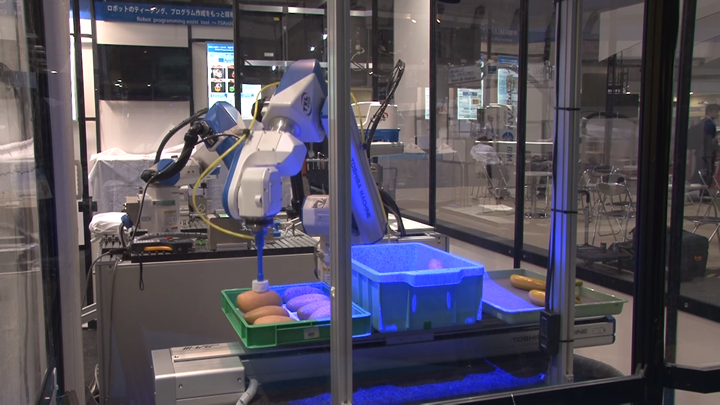Tips for choosing a 3D vision system - The future of vision systems in manufacturing

With four times as many as color receptors as humans, the Mantis shrimp has the most impressive eyes in nature. Manufacturers have long relied on human vision for complex picking and assembly processes, but 3D vision systems are beginning to replicate the capability of human vision in robotics. Here, Nigel Smith, CEO of Shibaura Machine, formerly Toshiba Machine, partner, TM Robotics, gives three rules to live by when choosing a 3D vision system for manufacturing.
Rule one: Abandon CAD
Advanced 3D vision systems are a stark contrast to the vision software of manufacturing’s past. Many existing systems still require professional CAD programming to ensure the robot can recognize shapes. However, even after programming, this software can have difficulties recognizing multiple items at once.
A common application for vision systems is removing and sorting items from a bin. While CAD-based systems can identify items in a bin, the challenge is recognizing the position of each item when presented in a random order — let alone determining the best method for the robot pick them in.
Advanced vision systems eliminate this problem by using passive imaging to enable the robot to automatically identify items, regardless of their shape or order.
Shibaura Machine’s vision system, TSVision3D, for example, uses two high-speed cameras to continuously capture 3D images. Using intelligent software, the system can process these images and identify the exact position of an item. This determines the most logical order to pick them up and does so with sub millimeter accuracy, with the same ease as a human worker.
Rule two: Mimic human perception
Deploying a robot for bin-picking isn’t advantageous if the robot cannot identify the edges of the bin. Considering the speed and strength of most 6-axis robots, hitting the box sides could easily halt production or damage the product.
Some manufacturers believe that motion stereo systems can effectively imitate a human’s perception of an item. Motion stereo systems use one camera, usually mounted on a robotic arm, to enable the system to move and take two or more photographs of an object. However, these systems require absolute precision as even the slightest movement can cause disparities in data and skew the measurement.
For manufacturers hoping to automate their box-picking processes, they should identify whether the system has a collision avoidance function. Advanced systems, including TSVision3D, enable the system to be programmed according to the size of the bin, ensuring the robot can dive into the box without a hitch.
Rule three: Simplify installation
Automation for jobs like bin-picking are designed to free manual operators from repetitive and menial tasks and speed up operations. However, some traditional vision systems involved multiple hurdles to implement, including longwinded installation methods and high levels of technical know-how.
Using 3D vision systems for bin-picking, cycle times can be as fast as 0.7 seconds. But, these productivity gains are useless if implementation of the software has high costs for time and staff resources.
When choosing a system, manufacturers must strike a balance between potential productivity gains and the resources required for installation. Today, manufacturers should opt for software that anyone, even with minimal training, can understand.
Eyes are a testament to evolution’s creativity. While they all have the same basic duty, the more advanced the vision system, the more information it can acquire. When choosing a vision system for manufacturing applications, manufacturers should consider how the system will improve their process, how it will manage complex requirements and how easy it is to understand and implement it.
More information on Shibaura Machine’s 3D vision system, TSVision3D, can be found on the TM Robotics website.
Comments (0)
This post does not have any comments. Be the first to leave a comment below.
Featured Product

